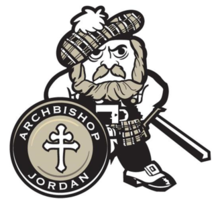English 9
In English Language Arts 9 students will continue to build on the skills that they have developed over previous years of English study, to enable each student to understand and appreciate language, and to use it confidently and competently in a variety of situations for communication, personal satisfaction and learning. They will be expected to be well prepared to enter into senior high English, beginning in grade 10. As such, students should expect to do more reading, to be more engaged in discussion and analysis, and to begin writing formally. In addition to the normal complement of short stories, poems and novel studies, students will begin exploring the language of Shakespeare through exposure to one of his plays.
Senior High English
There are two basic aims of senior high school English Language Arts. One is to encourage in students an understanding and appreciation of the significance and artistry of literature. A second aim is to enable each student to understand and appreciate language and to use it confidently and competently for a variety of situations for communication, personal satisfaction and learning. The senior high school English Language Arts program highlights six language arts: listening, speaking, reading, writing, viewing and representing. All of the language arts are interrelated and interdependent; facility in one strengthens and supports facility in the other. Two course sequences have been developed in order to accommodate a diverse range of student needs, interests and aspirations.
|
English 10-1, English 20-1 And, English 30-1 |
English 10-2, English 20-2 And, English 30-2
|
|
· Greater emphasis is given to the study of essays, novels, and the Shakespearean plays. |
· Emphasis is given to the study of novels, feature articles, reviews, and other forms of informative and persuasive text including technical writing, and feature films.
|
|
· Emphasis is on critical/analytical responses to texts. |
· Emphasis is on creation of personal responses to contexts in print and nonprint texts.
|
|
· The student is expected to understand symbolic language found in increasingly sophisticated texts.
|
· Students study a variety of texts at a variety of sophistication to meet the needs and abilities of students. |
|
· The student must develop close reading skills in order to understand contextual elements and subtexts. |
· Students are expected to develop sentence construction skills and be able to detect and correct common sentence faults. |
|
· Students may need to develop or improve critical and analytical reading skills. |
|
|
· Students are expected to demonstrate proficiency with sentence construction and be able to review and revise texts in progress to correct common sentence faults.
|
|
|
· *In English 20-1 and English 30-1, students are expected to use punctuation and rhetorical structures in a unique way to create effect
|
|

